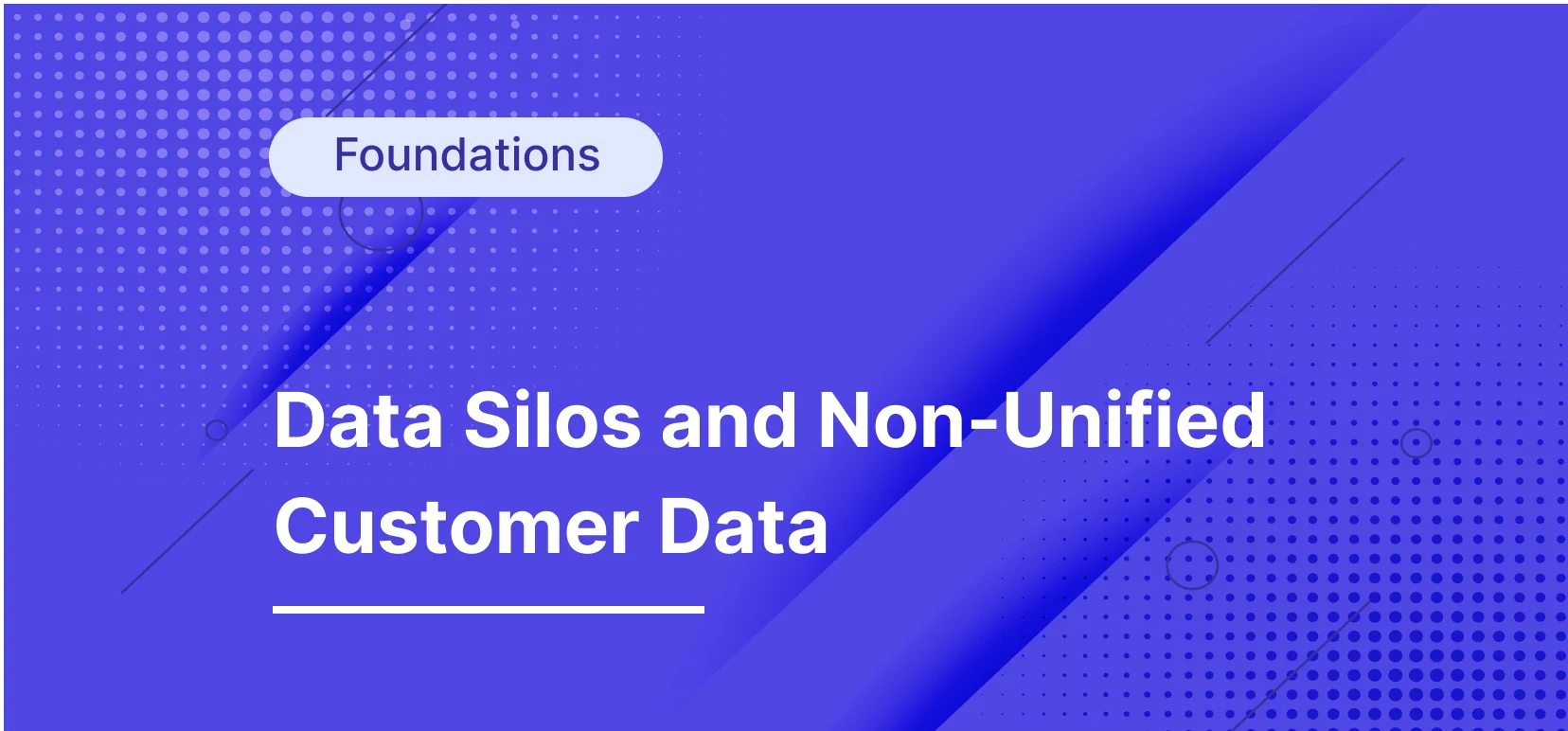- Experimentation,
- Personalization
Companies Are Failing in Personalization and Experimentation Because of Data Silos and Non-Unified Customer Data

Personalization and experimentation are critical components of a successful customer experience strategy. However, many companies fail to deliver on these fronts because of data silos and non-unified customer data.
Data silos occur when different departments or teams within an organization collect and store data independently — without sharing it with other teams or departments. This creates a fragmented view of the customer, making it difficult to personalize experiences and run effective experiments.
To overcome this challenge, companies need to break down data silos and unify customer data. This will enable them to create a single view of the customer, which is essential for effective personalization and experimentation.
In this playbook, we will explore
👉 the negative impact of data silos and non-unified customer data,
👉 provide strategies for addressing this issue
Data Silos and Their Negative Impact
Data silos refer to the situation where different departments or teams within an organization collect and store data independently, without sharing it with other teams or departments.
This creates a fragmented view of the customer, as each team has access to only a subset of the customer's interactions with the company. Data silos
give an incomplete view of the business
create a less collaborative environment
lead to poor customer experience
slow the pace of the organization
threaten the accuracy of data
create a security risk
When customer data is siloed, it becomes challenging to understand the customer's complete journey with the company.
For instance, the marketing team may have some information about the customer's interactions with the brand, but the sales team may have different data. This lack of a comprehensive view of the customer makes it difficult to personalize experiences and determine what experiments will be most effective. It also leads to inconsistent messaging and experiences for the customer, which can damage the overall customer experience.
This lack of a comprehensive view of the customer makes it difficult to personalize experiences and run effective experiments.
The Need for Unified Customer Data for Personalization and Experimentation
The negative impact of data silos on personalization and experimentation is significant.
Personalization is about creating tailored experiences for the customer based on their unique preferences and behaviors. To do this effectively, companies need to have a complete view of the customer's interactions with the company. But when data is siloed, it becomes challenging to create a complete picture of the customer, making it difficult to personalize experiences.
Similarly, experimentation is about testing different strategies and tactics to see what works best. This requires a comprehensive view of the customer to determine what will be most effective. But when data is siloed, it becomes difficult to determine what experiments will be most effective, leading to less effective experimentation.
To overcome this challenge, companies need to break down data silos and unify customer data. This will enable them to create a single view of the customer, which is essential for effective personalization and experimentation.
Companies can implement various strategies to break down data silos and unify customer data, such as
✅ creating cross-functional teams
✅ establishing clear data governance policies
✅ implementing a centralized data management system or customer data platform
Overall, it's clear that data silos and non-unified customer data are significant challenges for companies looking to deliver effective personalization and experimentation.
Companies that can break down data silos and unify customer data will be better positioned to create a comprehensive view of the customer, which is essential for delivering top-notch customer experiences.
Strategies for Breaking Down Data Silos and Unifying Customer Data
Companies can implement various strategies to break down data silos and unify customer data, such as:
Creating cross-functional teams: By creating teams with members from different departments, companies can encourage collaboration and data sharing. These teams can work together to create a comprehensive view of the customer and ensure that everyone has access to the same data.
Establishing clear data governance policies: Companies can develop policies that outline how data should be collected, stored, and shared. These policies can help ensure that everyone within the organization is following the same procedures and that data is being used effectively.
Implementing a centralized data management system or customer data platform: By implementing a centralized system, companies can ensure that all customer data is stored in one place and accessible to everyone who needs it. This can help eliminate the need for individual teams to collect and store their own data, reducing the risk of data silos.
The Bottom Line
In conclusion, data silos and non-unified customer data are significant challenges for companies looking to deliver effective personalization and experimentation.
Data silos occur when different departments or teams within an organization collect and store data independently without sharing it with other teams or departments. This creates a fragmented view of the customer, making it difficult to personalize experiences and run effective experiments.
The negative impact of data silos on personalization and experimentation is significant.
Companies that can break down data silos and unify customer data will be better positioned to create a comprehensive view of the customer, which is essential for delivering top-notch customer experiences.
Therefore, it is critical for companies to implement strategies such as creating cross-functional teams, establishing clear data governance policies, and implementing a centralized data management system or customer data platform to break down data silos and unify customer data.
Get in touch to learn how Ninetailed personalization, experimentation, and insights works inside your CMS

![4 Benefits of Headless A/B Testing [with Examples from Ace & Tate]](https://images.ctfassets.net/a7v91okrwwe3/1rAE9Eod5ybWUHtc9LEMLo/607bdcaf0512ec8f2af0f9f93dbe84f8/Ace___Tate_landscape.jpg?fm=webp&q=75&w=3840)